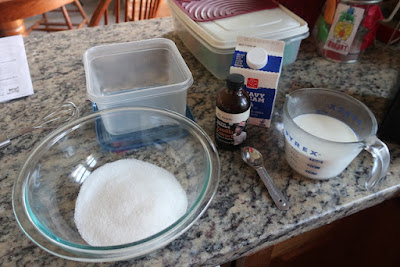The Life We're Looking For: Reclaiming Relationship in a Technological World by Andy Crouch
Modern conveniences have only gotten more and more convenient. We can communicate with almost anyone on the planet, and not just in text or on the phone but with live video. We can order food, drink, books, clothes, entertainment, gadgets, and anything else at the click of a button, often with the item arriving in a matter of hours, let alone days or weeks. The world is at our fingertips.
And yet, there is a crisis of genuine contact between people. Text messages are notorious for being misinterpreted; even videos don't quite give us the same experience that we have when we meet in person. Convenience has come at a cost. Do you even make eye contact at checkout counters? Do you even see the same people at the same store? Do you even see them as people? Of course, the opposite is distressingly true--do others sees you as a person? A person is more than the spending power of their credit card or the entertainment value of their presence. What we learn in modern interactions is not knowing a person as a person.
Andy Crouch looks at this dehumanizing quality of modern life and convincingly documents the ways that life has become less personal. Technology can do amazing things and can be helpful in certain ways, but the dominate tone is a false promise of fulfillment, fulfilling only basic needs and wants, not looking to deeper and more specifically human needs. Crouch provides ideas for how to counteract the numbing and isolating effects of our technologically-dominated world.
He builds on ideas started two thousand years ago, when the Roman Empire was at its height of world domination. A new movement started, in homes and around tables, where everyone had equal dignity: the scholars, the government officials, the scribes, the slaves, the females. Christianity provided a sea change in human culture with its emphasis on human dignity and care for even the most marginalized and supposedly worthless members of society. While it seems that such a scheme is doomed to failure, look where the Roman empire is today (in history books and museums) and where Christians are (all over the world, in hospitals and hospices, in food banks and soup kitchens). Crouch recommends we build households, places where people of different stages and stations in life gather and truly live together. Some households only have family, but often people who are not blood relations live in common and still develop close bonds and give mutual support. These are communities like the early Christian communities, where people would gather to pray and eat and serve each other. Such a lifestyle is unglamorous and won't wind up in history books or museums, but it will last for generations to come and will make the world a better place.
This book is inspirational without being ham-fistedly religious. While referencing Christianity, Crouch does not argue that we depend on grace or supernatural interventions in order to heal the wounds in modern society. He is not telling anyone to go to church or to pray to God (he does not write about that). Crouch keeps it on a humanist level, even while acknowledging that the problems of hedonistic, materialistic culture are the results of serving Mammon, which Jesus claims in Matthew 6:24 is what you are serving if you aren't serving God. People need to make priorities and some priorities are better than others.
Highly recommended, and it's a quick read too!
SAMPLE QUOTE: "The privacy we cherish is constantly in danger of curdling into isolation." [p. 160]

















































